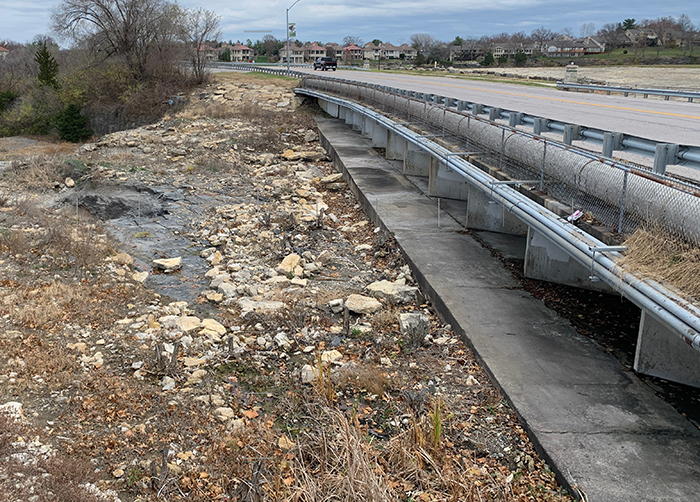4 Tested Strategies for Maintaining Lakes and Dams
Posted on Tuesday, July 20th, 2021 by Affinis CorpIn Structural, tagged in

Performing routine assessments is critical to maintaining the integrity of dams and lakes. Catching issues early increases safety for those in the area and often translates to a lower project cost. For more than three decades, we’ve conducted these checks and have developed a list of four key takeaways. You’ll find each one below.

Conduct Regular Assessments
When performing an inspection, start by walking both upstream and downstream dam slopes for the entire dam’s length. Also, look at the dam’s operation structures (outlet valves, syphons, and instrumentation) to make sure they are working properly. This should be done at least once a year, but can be performed more frequently. Dams with features, like concrete spillway, filter outlets or collector manholes, seepage measurement structures (weirs), internal embankment filters, piezometers, or principal spillway inlets and outlets, should be checked more often. We also recommend performing video inspections of all pipes to verify they aren’t blocked, corroded, or degraded every five years.
We suggest performing lake and dam assessments in the fall. In the spring, water may be moving through the spillway, making inspection of the entire spillway difficult. During the winter months, it can be more challenging to see all dam features due to a frozen lake or snow cover.
Assign Tasks
Dams and lakes are often not owned by a city. Instead, local volunteers are responsible for monitoring the structures. Assign tasks, like weir readings, measuring the lake level, and recording data. By choosing who will perform each, you can help keep these jobs happening consistently.
Gather Historical Data
Collecting data regularly helps provide a better understanding of a dam or lake’s history. In fact, our team needs a good data set before making any designs. By analyzing it, we can tell a lot about what a dam is doing. Our client, the Weatherby Lake Improvement Company (WLIC), makes systematic checks, and the information they provide to our team is invaluable. It helps us more quickly pinpoint problems and develop potential solutions.
These items all tell the story of seepage and how it relates to the lake level. As water elevation rises, it should move in correlation with the seepage. If they’re not changing in tandem or seepage flows are increasing, it can indicate seepage through the dam that may require steps to repair or additional monitoring.
Understand What to Look For
When walking the site, lake operators can look for a few key signs. Depressions, waterloving vegetation (i.e. cattails), or unusually green grass on a dam embankment can signal a dam seepage location. Outlet works and valves should be exercised often. Dips in the dam crest or cracking in dam slopes are other indicators of possible problems with the dam’s integrity or performance. Also, be sure to examine any concrete features for excessive cracking, movement, or deterioration. Like many things it is much more economical to repair and maintain rather than replace, so catching repairable items early is critical to reducing maintenance costs.
To learn more about our services, visit this page.